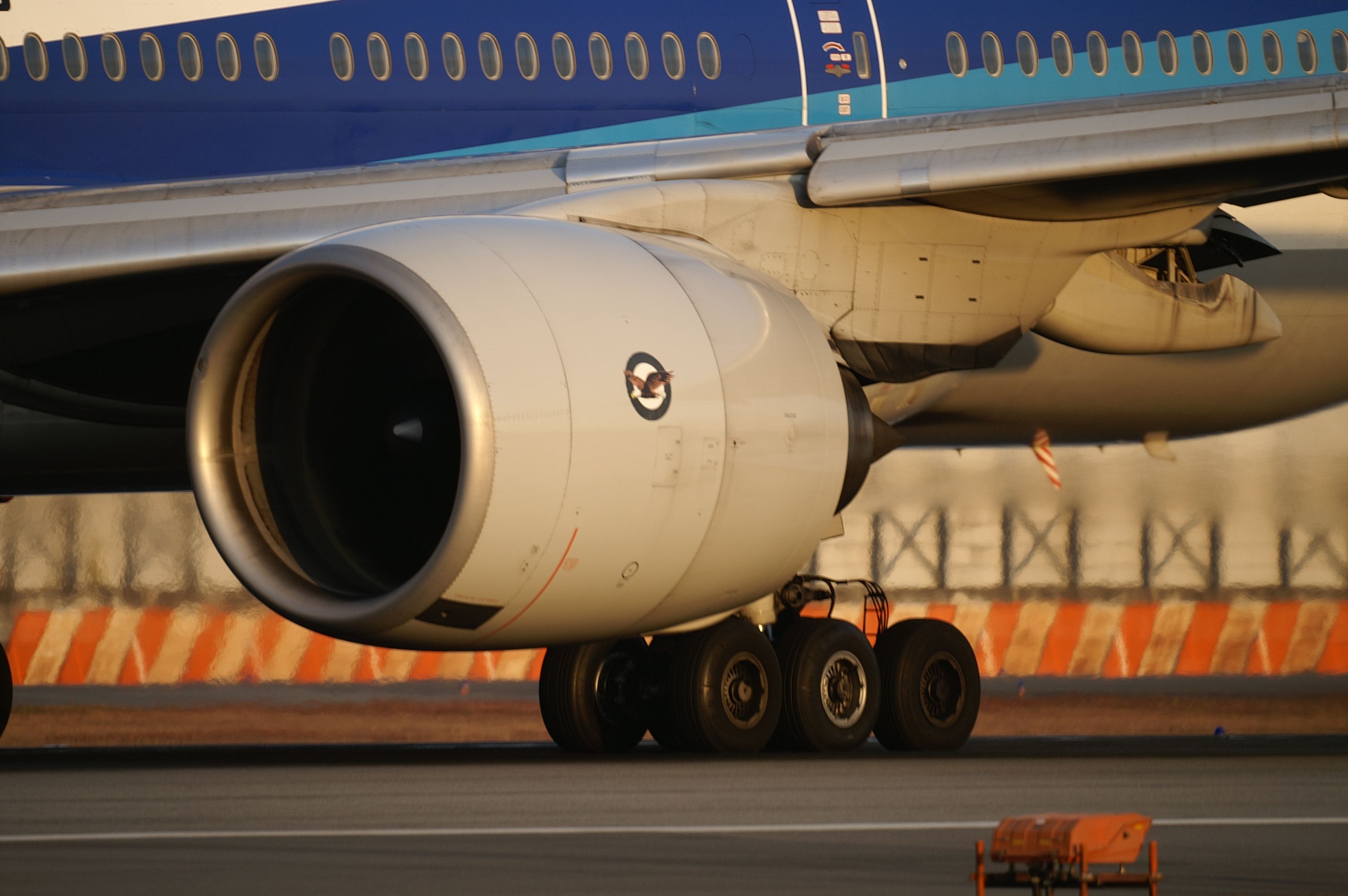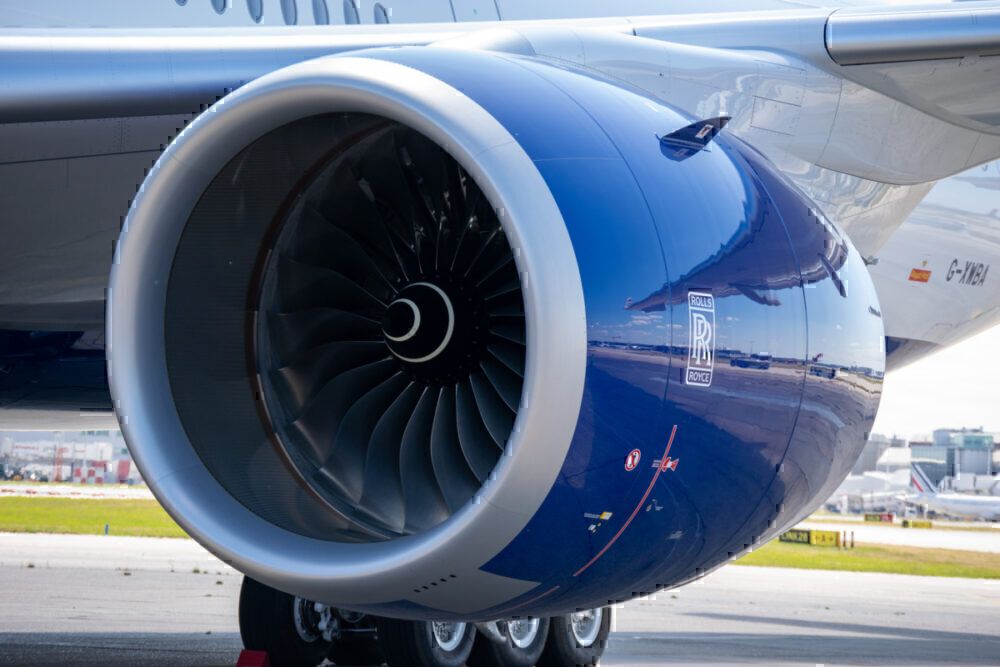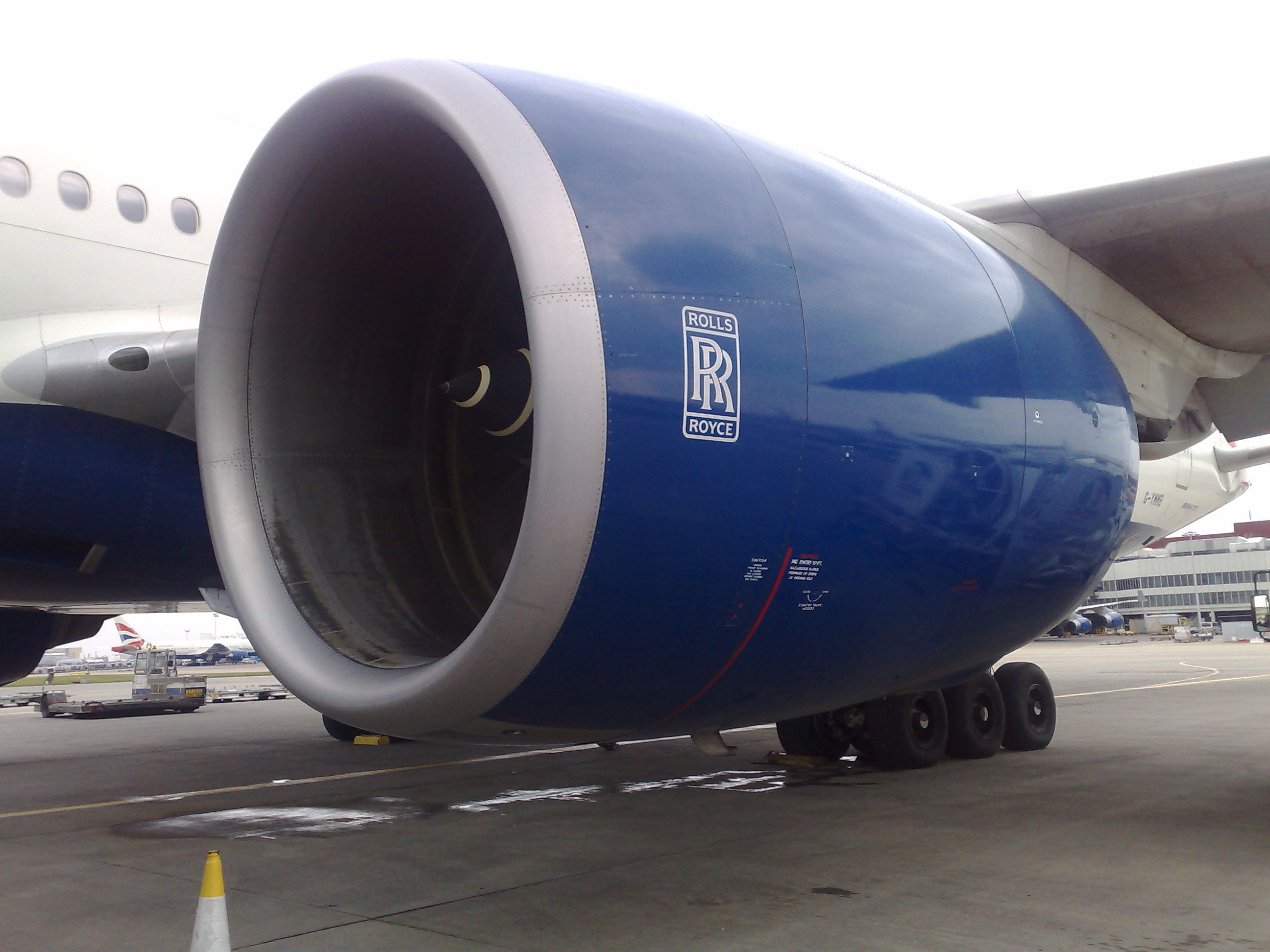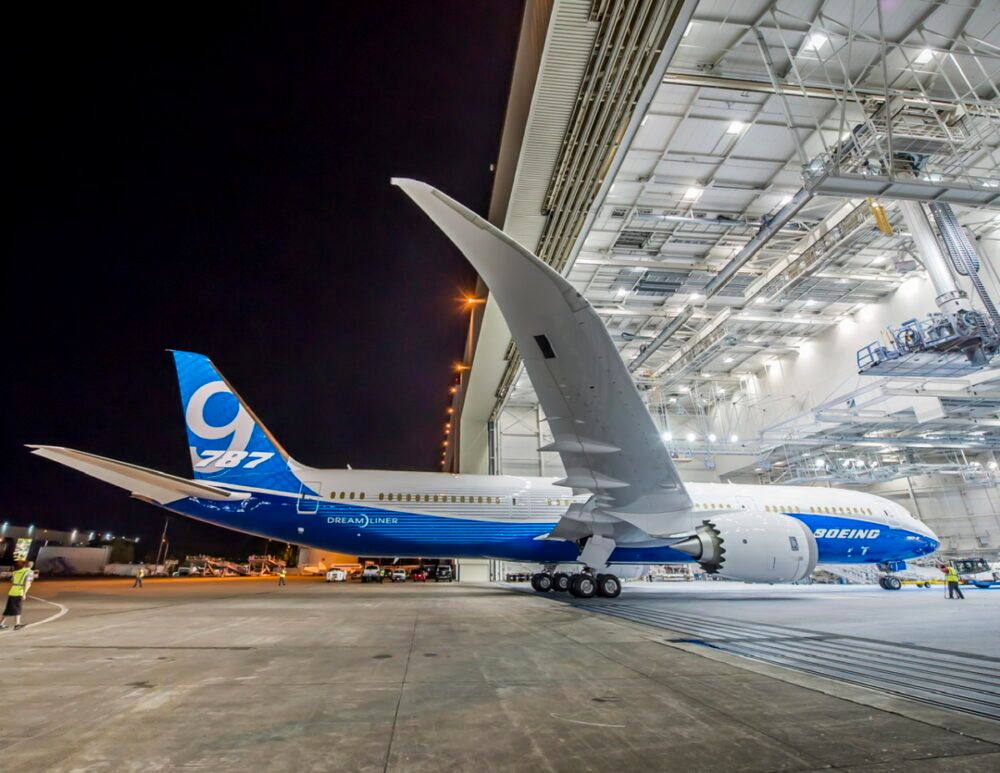When it comes to making a new aircraft, engine design is at the top of the list for any manufacturer. Powerful and efficient engines can allow aircraft to travel longer distances with a lower fuel burn, a key factor for airlines. So which are the most powerful aircraft engines today, and what planes are they found on?
As expected, the most powerful commercial plane engines are found on widebody aircraft. The most powerful engines are also found on twin-engine jets rather than four-engine ones due to the need for more thrust on twin-engine planes. With that, let's jump into the list!
General Electric GE9X
The current leader in the engine market is the upcoming GE Aviation GE9X. While not in commercial service yet, the engine will feature on the upcoming Boeing 777X and has already flown a number of test flights. The engine is based on the design of the GE90, which is found on the older 777.
The GE9X can provide 134,300 lbf (pound-force) of thrust at its maximum, an impressive 5% increase over the older GE90-115B. The use of composite carbon-fiber materials has allowed the engine to be 10% more fuel-efficient than its predecessor without a drastic increase in size.
Although, for now, the engine is only certified for 105,000 lbf of maximum thrust, leaving open the chance of more powerful 777X variants in the future. However, the debut of the GE9X has been delayed until at least 2024 due to certification issues over at Boeing for the 777X. This means it will be two more years before we see this new technology enter the market and prove its place as the best pick for a widebody engine to date.
Get the latest aviation news straight to your inbox: Sign up for our newsletters today.
General Electric GE90 series
Coming in at second place is another GE engine, the GE90, which can be found on the popular 777 aircraft lineup. The engine first came into service in 1995 with British Airways' 777-200s. As the 777 family grew, so did the GE90 variants, with the third-generation engines being the most powerful to date. These are the GE90-115B and -110B, which are found on the 777-300ER and 777-200LR and 777F, respectively.
The GE90-115B can offer an impressive 127,900 lbf of maximum thrust, although it is certified at 115,000 lbf (hence the name). The improved efficiency of these variants (over the GE90-94B) allowed airlines to launch new long-haul routes such as Doha to Auckland and expand services.
The GE90 remains one of the most commercially successful widebody engines to date, with over 2,500 orders for the type. The engine is also a key factor in the success of the Boeing 777, which allowed airlines to move away from quad-engine jets for good and make huge efficiency gains. Considering the GE90 remains the base for the 9X and is in widespread service, expect to see these powerplants in action for decades to come.
Pratt & Whitney PW4000-112
Pratt & Whitney makes it to the list of most powerful engines in the world with its popular PW4000 series, which is found on the Airbus A330, Boeing 767, and 747, was also re-engineered for the 777.
The PW4000-112 offers up to 99,000 lbf of maximum thrust; however, it remains certified for 90,000 lbf. While lower than GE's equivalent, the PW4000's commonality across fleets, and reliability, made it attractive to those already using the type. The lower cost of maintenance and spare parts was a big reason for the PW4000's later sales.
The PW4000-112 went to be re-engineered to fit the Airbus A380, as a part of the Engine Alliance GP7000 project with GE. While the PW4000 has since been replaced on newer widebodies, it remains a popular engine on older aircraft and will be in service for years to come.
Rolls-Royce Trent XWB
Next on the list is the Rolls-Royce Trent XWB, exclusively powering the popular Airbus A350 model. There are two variants of this engine in service, the XWB-84 and XWB-97, which power the A350-900 and A350-1000, respectively. The engine came into service in 2015 with Qatar Airways on the first A350.
The XWB-97 is the more powerful of the two variants and offers 97,000 lbf of maximum thrust, as the name suggests. The Trent XWB is also considered one of the most efficient engines ever built, which allows the A350 to start a new generation of ultra-long-haul flights such as Project Sunrise and Singapore Airlines' New York to Singapore service.
It is the smaller XWB-84, with 84,000 lbf of thrust, that has caught attention recently. Found on the A350-900, the XWB-84's construction makes it one of the most efficient offerings on the market, allowing its use on regional, long-haul, and ultra-long-haul routes. Singapore Airlines' A350-900ULR also uses this engine, highlighting its versatility.
Rolls-Royce Trent 800
The Trent 800 was Rolls-Royce's engine offering for the Boeing 777. The engine first came into service with Thai Airways in 1996, the last of the three engine providers for the first-generation 777.
The Trent 800 featured an impressive 95,000 lbf of maximum thrust, making it one of the most powerful engines at the time. Rolls-Royce also boasted that the Trent 800 was the lightest of all three 777 engine options, increasing overall efficiency and lowering fuel burn, an attractive proposition.
While the engine did hold an impressive 40% of the market, RR did not offer variants for the 777-300ER and -200LR, which went exclusively to GE. This meant the Trent 800 had a relatively short time in the market, but its development proved valuable to Rolls-Royce's next generation of engines, such as the XWB.
Honorable mentions
Some notable absences from the list include the likes of the GEnx and Trent 1000, which are the engine options for the 787. While highly optimized for efficiency, these engine offer slightly lower maximum thurst, meaning they closely miss out on the list. The GEnx is certified to produce 75,000 lbf of thrust, nearly identical to the Trent 1000.
Similarly, four-engine aircraft also have multiple high-efficiency engines rather than higher thrust engines. The most recent quadjet, the 747-8 comes with four GEnx engines, with the older A380 comes with four GP7000 engines (with a maximum thrust of 74,700 lbf).
Engine development almost goes hand-in-hand with aircraft design, with the pair needing to work in harmony to produce the best results. In recent years we have seen a shift toward manufacturers working with a single engine maker for their projects to optimize the results. While this leads to fewer choices for airlines, it has yielded exceptional results in terms of efficiency, such as the 777X and A350.
What do you think about the list? Which engine do you prefer while flying? Let us know in the comments!

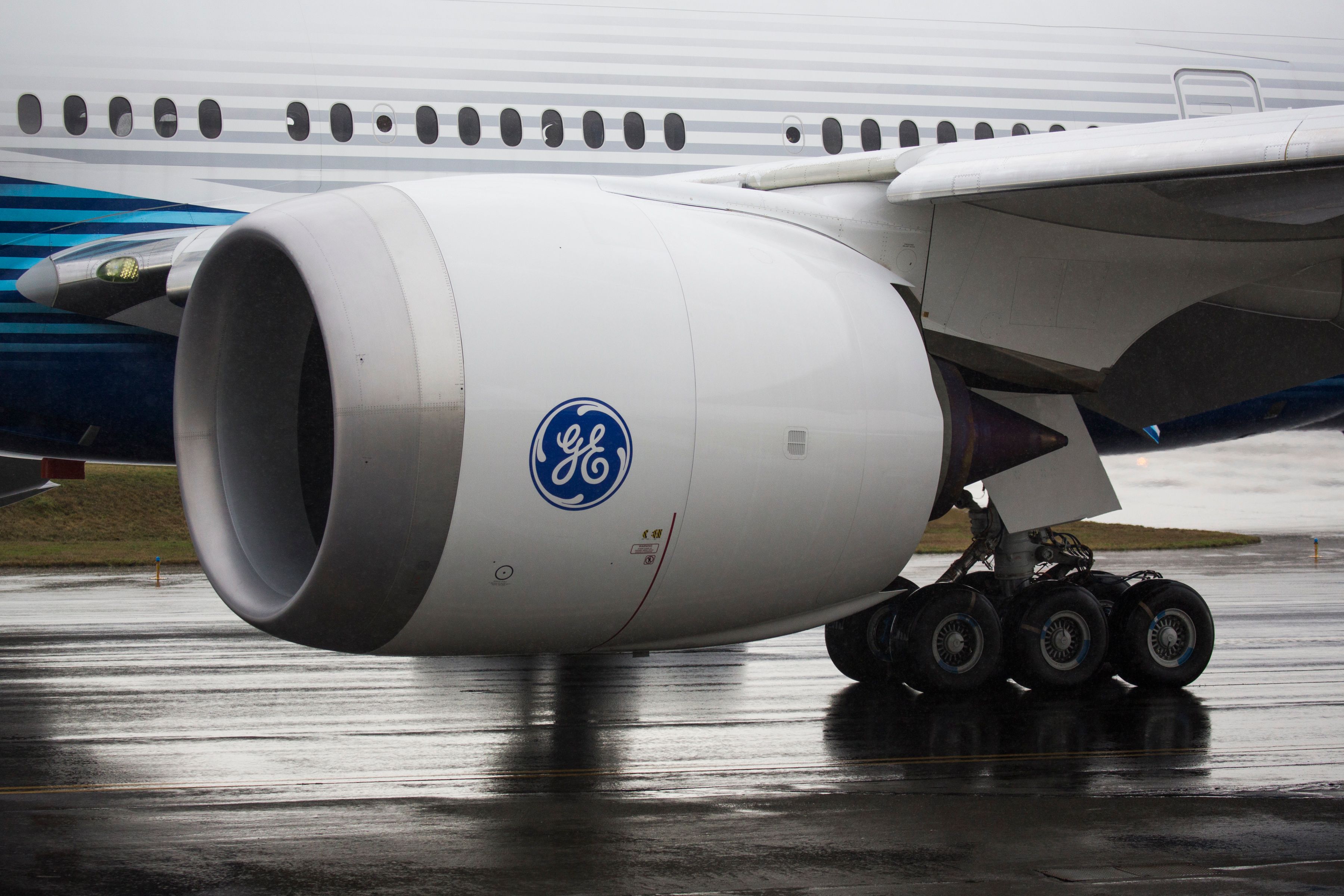
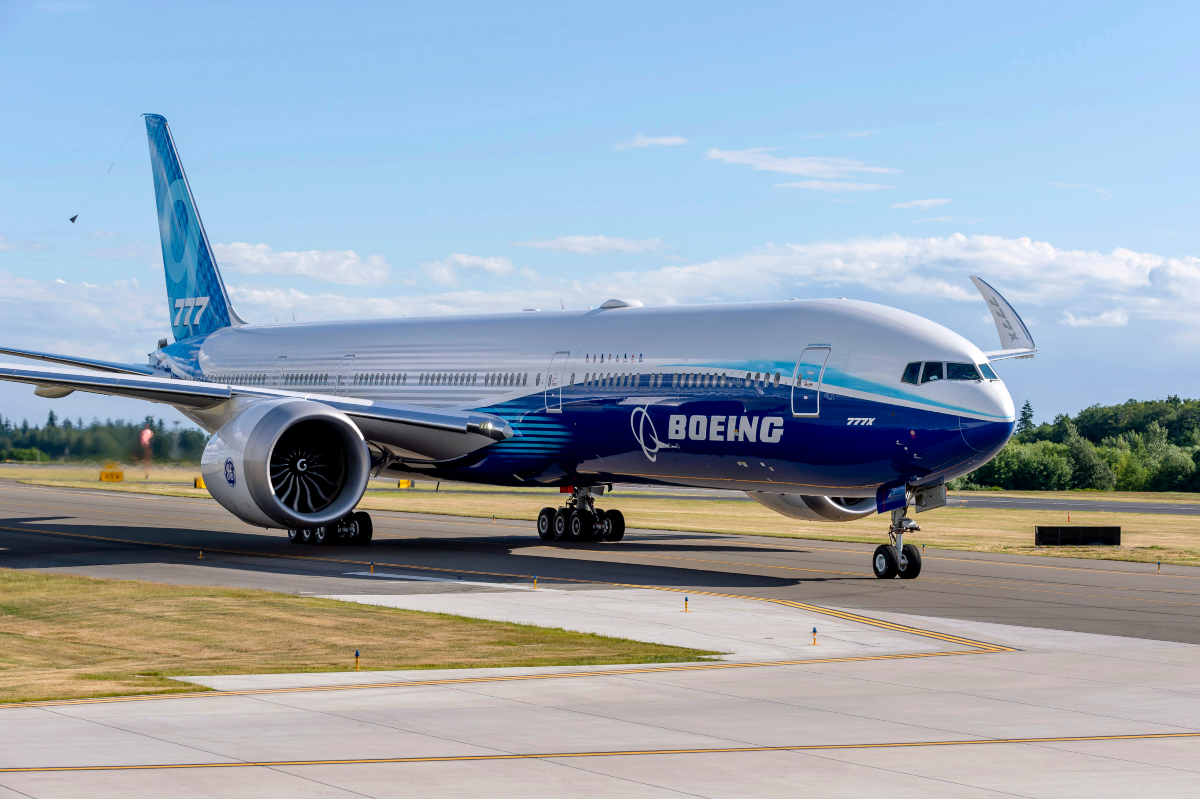
-A6-EQE-(2).jpeg)
